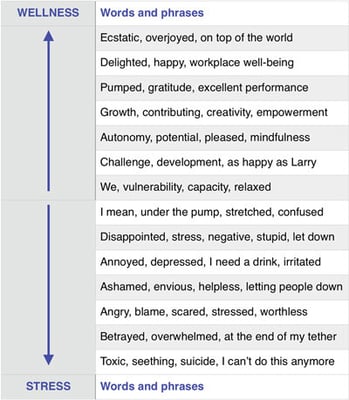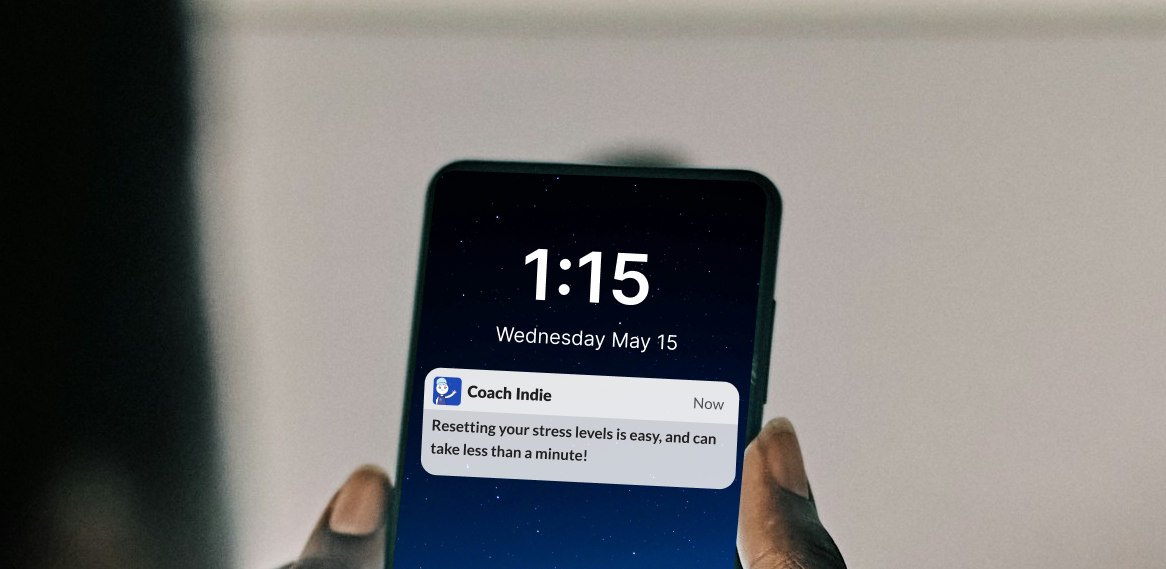2020 has been… something else. On a positive note, though, what we are seeing is that organisations are really starting to pay attention to, and prioritise, their people’s wellbeing. It’s become very clear that to thrive, your people must come first. But this in itself poses quite the challenge. How do we know our team is struggling when we can’t always see them? This is one of the key questions we wanted to answer when we built Indie.
Today, we’re looking at some signs to help you recognise stress in your team, so you can take action before it hurts them and your organisation.
Physical cues
You may not be face-to-face, but you can still look for physical cues of stress during video meetings/chats. Be aware if your team members are more fidgety than usual, have a dishevelled appearance (well, more than usual for certain individuals), dark circles under the eyes from lack of sleep, or are appearing distracted or disinterested.
Some cues are more subtle than others, like facial expressions. Lack of animation, and not smiling or laughing are all signs that stress could be on the rise in your team. If they are turning off their camera during meetings, then it’s worth checking in with them as well.
[Check out: How to refuel when you’re feeling emotionally drained]
Attitude and productivity
A negative shift in attitude and productivity drop can be a sign of overwork or a disengaged workforce. But a lack of interest isn’t always due to laziness. It can be a symptom of a larger issue. Your team may be experiencing, or not far off, burnout.
Are your team members saying they’re tired? Are they more negative than usual? Are they missing deadlines? And, importantly, do they seem to care?
Short bursts of stress can boost productivity. But once the adrenaline wears off, prolonged stress can lead to burnout and a wide array of physical and mental health concerns. It’s important to get ahead of these before they become a problem.
[Check out: How to develop a mindset for success]
Change in communication

Examples of words and phrases used by Pioneera’s AI stress bot, Indie, to analyse team wellness and stress.
A change in communication style and frequency can be a sign that team members are struggling. Are they skipping pleasantries? Are they less chatty, more blunt/direct? Does their communication - written or verbal, have a negative tone?
It’s also important to pay attention to the words and phrases people use, as they can say a lot about how they’re feeling.
Here are some phrases to look out for - written or verbal, as clear signs of stress:
-
This is impossible
-
This is stupid
-
There are no options
-
I feel like I’m letting people down
-
I can’t do this anymore
Furthermore, a lack of communication altogether - withdrawing or avoiding engagements, can also be a sign of overwhelm, anxiety and stress.
[Check out: How to build resilience for high performance in times of adversity]
Trust your instincts
You know your team. But with this level of stress, for this long, without an end in sight, all assumptions are off the table. Anyone and everyone can be affected. If you have a feeling that someone is struggling, they probably are. You’ve got your team’s best interests at heart, so trust your instincts if something feels off. And just check in to say hi. A quick “hi, how you doing today”, never goes astray.
[Check out: 7 tips for working from home]
Final thoughts

To be fair, these times aren’t normal… we’ve all been under significant stress. The blur of work and home life certainly isn’t helping. Fluctuations in productivity are quite normal for stress of this magnitude. Nonetheless, for the wellbeing of your people, it needs to be monitored and addressed.
Once you’re familiar with the signs, you can intervene and address team stress before it becomes a problem. This gives you and your people a far greater chance of weathering 2020 and beyond.
Need an extra hand?

Pioneera’s AI bot, Indie, helps you know when stress is on the rise in your team and what you can do about it, before it’s too late. It lets you know your team’s wellness and stress trends in real-time, without the need for surveys. It’s confidential and safe. She’s your new best friend in the office, especially when you can’t always see your team.
Indie can be connected to your chat system in just a few clicks. Get started now!






